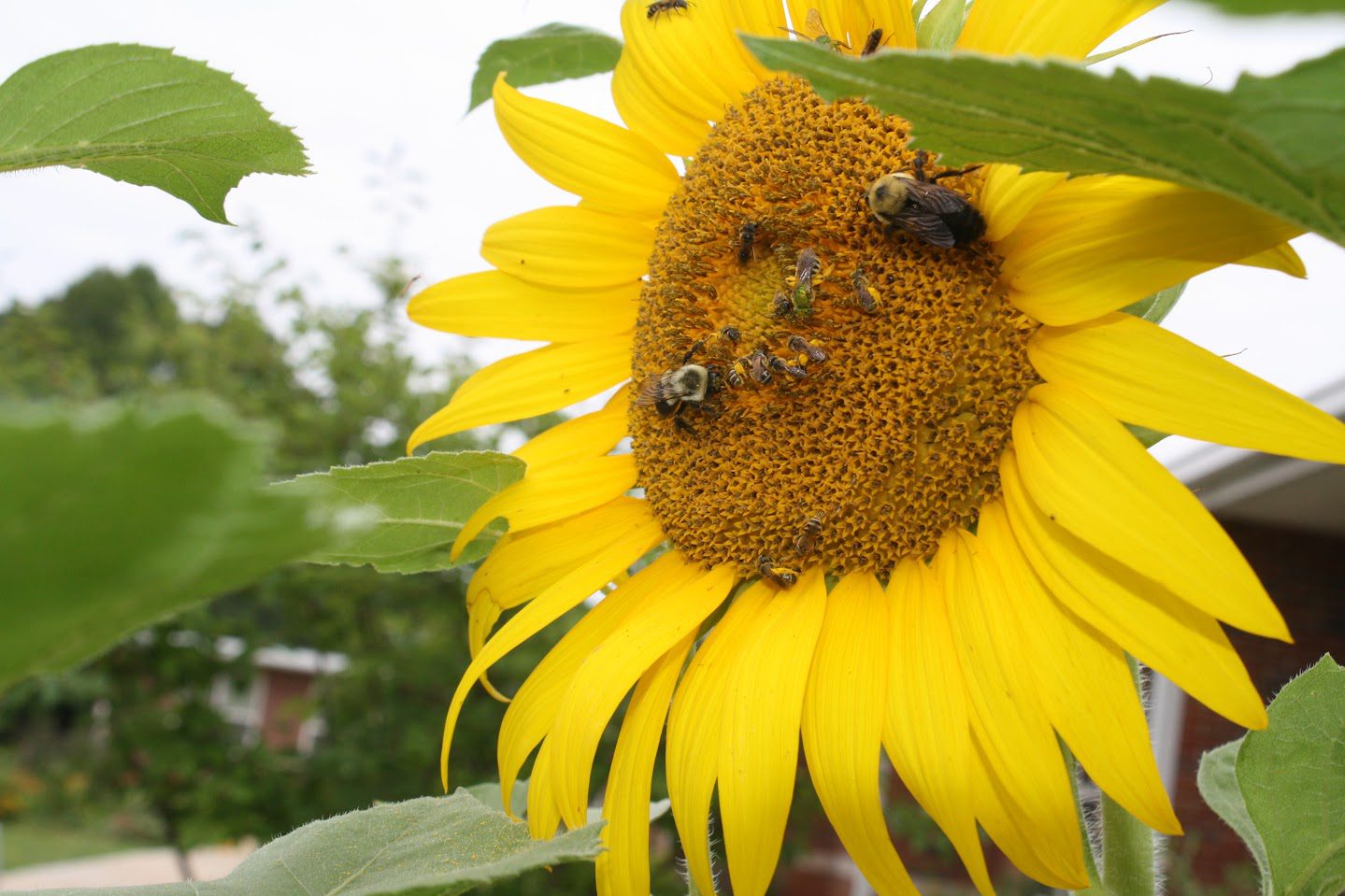
Photo Credit: pollinator.org
by Sue Watts
Pollinators are an excellent way to engage children with nature, and native plants are the best means of supporting these vital insects. Many young participants in my programs at the South Carolina Botanical Garden are well-versed in the world of non-native honeybees. Yet, they are often surprised to learn about the vast diversity of native bees and their crucial role and efficiency as pollinators. In the United States alone, there are over 4,000 species of native bees. These range in size from the diminutive fairy bees (Perdita spp.), found in the western regions, to the sizable carpenter bees (Xylocopa spp.). Here, I offer some tips to enhance your understanding and appreciation of our local native bees.

Photo Credit: Sue Watts
Observation is the most straightforward approach to familiarize yourself with native bees. If the prospect of being close to bees makes children (or you) nervous, it’s important to stay calm and avoid sudden or aggressive movements. Most native bees are solitary and non-aggressive, but caution is advised around all wild animals.
Starting Your Observation
You can begin observing now! In spring, despite low temperatures and overcast skies, it’s possible to spot bumblebee queens visiting early-blooming wildflowers. These robust insects, with their distinctive fuzzy bottoms, move relatively slowly, making them easy subjects for observation. You might even witness the fascinating process of buzz-pollination, where a bee vibrates its flight muscles intensely to shake pollen loose from flowers. For an example, watch this video HERE. As the year progresses, you can spend many rewarding hours observing a wide array of native bees frequenting various plants. To aid in identification, several basic online guides to our native bees are available for free download:
- Bee Basics: An Introduction to Our Native Bees
- Bee Identification Guide
- Bumble Bees of the Eastern United States
Consider downloading these guides and encouraging children to create collages or use them as coloring books. This provides a fun, interactive way to become familiar with bees.
Gardening for Bees
Gardening is another fantastic way to engage children in learning about bees. You can start simply by planting annual sunflowers (Helianthus annuus), which are not only easy to grow but also provide a rich source of nectar and pollen for bees. Research has shown that sunflowers can improve the health of bumblebees. For optimal growth, plant sunflower seeds in a sunny spot (6-8 hours of sunlight) in well-tended soil once the risk of frost has passed and the soil has warmed to at least 50°F. For more tips on growing sunflowers, visit Clemson’s Home and Garden Information Center. To offer bees food throughout the year, consider planting a variety of plants. The Xerces Society provides a helpful planting guide for the Southeast, which can be found HERE.
Additional Projects
Creating a water station or a bee hotel are simple projects that can further aid our native bees and provide more observational opportunities. For water stations, fill a shallow bowl with pebbles or marbles, add water, and place it in a shaded area near bee activity to attract pollinators. Bee hotels can be made from blocks of untreated wood drilled with holes or from bundles of hollow sticks or paper straws. Detailed instructions on creating bee hotels can be found HERE.
Citizen Science
Participating in citizen science projects, such as The Great Sunflower Project, The Southeastern Bumble Bee Atlas, or the Great Southeastern Pollinator Census, is a fun way for families to contribute to the understanding of bee populations and health. These projects offer extensive materials to further your knowledge of bees and other pollinators:
- The Great Sunflower Project
- The Southeastern Bumble Bee Atlas
- The Great Southeastern Pollinator Census
In conclusion, while there are many ways to engage with and learn about native bees, simply observing and photographing them can be among the most rewarding. I hope this article inspires you to explore the fascinating world of native bees by sharing it with the next generation.



